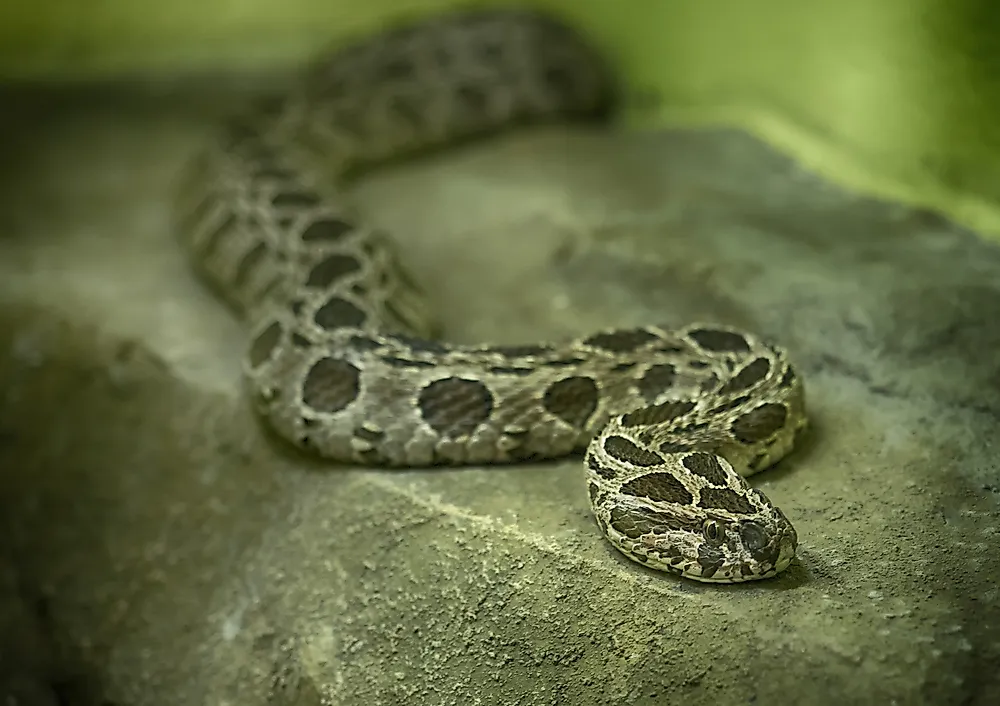Russell's Viper Facts: Animals of Asia

5. Physical Description
The Russell's viper, a member of the Genus Daboia, is a monotypic variety of venomous viper. It has a flattened and triangular head, covered by irregular and fragmented scales. Its eyes are large, each surrounded by 10-15 circumorbital scales. It also has a rounded and blunt snout, with large nostrils.Their bodies, on the other hand, are stout with strongly keeled scales and a short tail. In regards to their coloration, they are usually found to possess a deep yellow, tan, or brown hue, with three series of dark brown spots on their body. Their average adult lengths reach around 4 feet.
4. Diet
Very active predators, Russell's vipers are strict, though opportunistic, carnivores. They will seek out a variety of prey, though they are especially attracted to rodents and lizards. That said, they will eat pretty much everything they can catch with a heartbeat. Feeding primarily on an assortment of rodents, such as rats, mice, shrews, and squirrels, they will also eat land crabs, scorpions, lizards, as well as other small animals. They will sometimes attack humans as well. Another fact worth mentioning is that they are also known to be cannibalistic, and their venom is potent.
3. Habitat and Range
Russell's vipers are not restricted to any particular kind of habitat, although they tend to avoid dense forests and humid environments, such as swamps and marshes. They are mostly found in open and bushy areas, forests, coastal lowlands, and hills. They can also thrive near highly urbanized areas in the countryside. They are native to, and most commonly spotted in, south Asian countries, especially India, Pakistan, Sri Lanka, Bangladesh, and Nepal. Smaller populations may be found in China, Myanmar, Thailand, Cambodia, Taiwan, Indonesia, Vietnam, and Laos. They are classified as being a species of "Least Concern" by the ICUN.
2. Behavior
Russell's vipers are nocturnal, terrestrial reptiles, meaning they are only active on land, and conduct the bulk of their hunting and preying at night. However, in the cold weather, they will sometimes become more active during the daytime hours. This is because they have heat-sensitive organs which enable them to react to temperature changes acutely. Despite being strong, they typically exhibit languish and lethargic behavior, although they may become very aggressive when irritated or in danger. They may react violently if someone tries to pick them up, making a loud hiss and biting. Their venom is often fatally poisonous to humans.
1. Reproduction
Following mating season, the gestation period of more than six months, young Russell's vipers are produced from May to November, though mostly in June and July. This species of snake is ovoviviparous, meaning that their young are born as small larvae between 8.5 and 10.2 inches, maturing inside the bodies of their mothers until ready to hatch, receiving nutrients via a yolk sac. Females are prolific breeders, giving birth to litters that commonly yield between 20 and 40 young, though they can be as large as 75. The young reach sexual maturity themselves within two to three years of birth.











